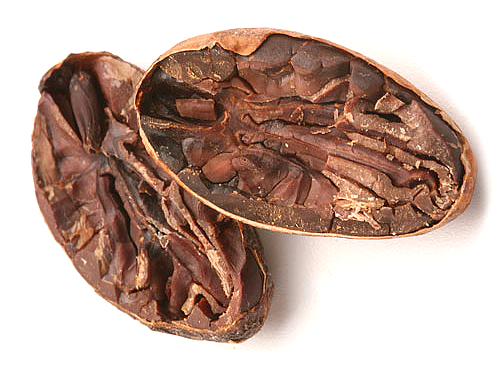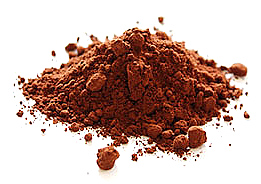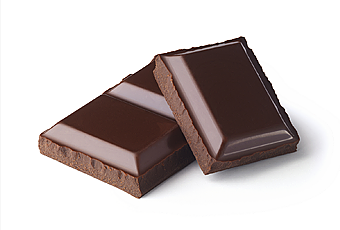Popular Articles
- Thyax Supplement Facts
- Best Thyroid Supplements
- Natural Alternatives to Synthroid
- Losing Weight Might Be Hard With Low Levels of This...
- Thyroid Health - Natural Ways to Boost an Underactive Thyroid
- Product Review | Armour Thyroid
- Thyroid Health | How to Boost T3 and T4 Levels
- Thyroid Health | The Best Vitamins for Hypothyroidism
- Ginger and Weight Loss
- Best Weight Loss Supplements for Men and Women
- More Articles ...
 Can Cocoa Help You Lose Weight?In This Article
Cocoa is a nutritional powerhouse and a superfood. Its health benefits are very many and more are being discovered. One of such benefits is weight loss. How does cocoa promote weight loss and what other health benefits does it provide? Read on to find out.
What is Cocoa?Cocoa refers to cocoa solids or cocoa powder, the low-fat cocoa product commonly used to make chocolate. The cocoa bean, the dried and fermented seeds of Theobroma cacao is processed into cocoa solids and cocoa butter. The color and appearance of cocoa depend on its pH. Mildly acidic cocoa powder is light brown in color while lightly alkaline cocoa powder takes a dark brown coloration. More alkalized cocoa can appear even in darker shades of brown, red, and even black. The raw cocoa bean is nutritionally the richest fraction of cocoa plants. It is estimated to contain about 300 phytochemicals including calcium, potassium, sodium, magnesium, manganese, sulfur, zinc, copper, and phosphorus. Cocoa also contains caffeine and theobromine.
Concerning neurotransmitters, cocoa can also improve the levels of dopamine. It contains phenylethylamine and monoamine oxidase inhibitors. All of these means that cocoa can improve the levels of brain chemicals needed to maintain attention, mental focus as well as improve cognition and memory. Cocoa is regarded as a natural food with the highest antioxidant value. It contains more antioxidants than green tea and red wine. Its ORAC (oxygen radical absorbance capacity, a measure of antioxidant potency) score is much higher than many of the popular fruits and vegetables reputed for their antioxidant contents.
The Flavonoids in CocoaThe flavonoid content of cocoa is responsible for most of its healthful benefits. There are 6 groups of phenolic compounds in cocoa and flavanols (a subgroup of flavonoids) are the most important of these. The amount of flavonoids present in a cocoa product depends on the processes involved in its production. However, flavonoids can make up 10% of the final weight of foods derived from cocoa. Flavanols are known for their antioxidant, anti-inflammatory, and antiplatelet properties. Therefore, cocoa can improve lipid profile, blood pressure, and insulin resistance. The major example of flavanols in cocoa is epicatechins and catechins. The active forms of these 2 flavanols are (+) catechin and (-) epicatechin. The process of alkalization, which converts raw cocoa to chocolate and other related foods, converts (+) catechin to its (-) form which is not as easily absorbed into the body. However, alkalization degrades epicatechin more than catechin. Another group of flavonoids found in cocoa is the flavonols such as quercetin and its metabolites. They also contribute to the overall antioxidant property of cocoa and they are similarly affected by alkalization. The Health Benefits of CocoaSince cocoa is the primary ingredient of chocolate, many people assume that cocoa and chocolate possess the same health benefits. However, raw cocoa is a healthier choice. This is because the processes involved in the preparation of chocolate such as cooking and alkalization degrade the flavonoids present in cocoa. Therefore, while flavanol-rich cocoa has been shown to provide clear benefits to cardiovascular health, such benefits are much smaller with chocolate. In addition, the milk added to some chocolate reduces the number of flavonoids in the final product. One study even found out that milk can prevent the absorption of flavonoids from milk chocolate. Among the many clinical studies that have been done to investigate the health benefits of cocoa, one study investigated the long-term effect of cocoa consumption. This study was conducted by researchers from Harvard Medical School, and it simply compared the health of the Kuna Indians of Panama (who were renowned to consume a lot of cocoa daily) to the health of the dwellers of the mainland (who consume far less cocoa). The Kuna islanders had lower rates of heart disease and cancer than the inhabitants of mainland Panama. Specifically, regular and heavy consumption of cocoa was noted to improve blood circulation as well as learning and memory. In addition, the antiplatelet properties of flavonoids prevent the formation of blood clots which may block blood vessels. The oleic acid found in cocoa also increases the number of high-density lipoproteins (HDL or “good” cholesterol) over LDL. In an analysis of previously published clinical studies published in the Journal of the American Medical Association, cocoa consumption was ruled to help reduce blood pressure while black and green tea may not. In 2006, the journal, Archives of Internal Medicine, published the results of a long-term study involving elderly men which showed that regular consumption of cocoa can reduce cardiovascular mortality by half and general mortality by 47%. How Cocoa Promotes Weight Loss
In fact, the link between weight loss and caffeine or theobromine is not well-established. While some weight loss plans include caffeine and theobromine, some studies find no gains in weight loss with these compounds. Still, the contributions of caffeine and theobromine may still be significant. The combination can suppress appetite, help shed water weight, and increase muscular activity to drive the burning of stored fat. However, beyond these generic effects, cocoa can also provide more specific benefits for weight loss. Cocoa, Cholesterol, and AdiponectinDifferent studies have established the benefits of cocoa on the lipid profile. The flavonoids in cocoa control the levels of cholesterol in the body. In one study done by a group of researchers from John Hopkins, 2 weeks of cocoa consumption was shown to increase HDL levels by 9% while lowering LDL levels by 6%. Cocoa also protected the LDL produced from being oxidized to form metabolites that can damage the blood vessels. Besides this, cocoa was able to increase Apo A-I protein and PON-paraoxonase levels. Apo A-1 protein clears away cholesterol from arteries while PON-paraoxonase is an HDL-associated antioxidant enzyme. While improving cholesterol levels can contribute to the reduction of central obesity and improvements in cardiovascular protection, the flavanols in cocoa do have specific weight loss benefits. For example, cocoa consumption increases the production of adiponectin. Adiponectin is a protein hormone released from the adipose tissue into the blood. In adults, the higher the blood level of adiponectin, the lower the percentage of fat in the body. As a hormone, adiponectin can reduce the risk of obesity, type II diabetes, and atherosclerosis. These benefits are the result of the ability of the hormone to tightly regulate glucose levels, improve insulin sensitivity, and regulate fatty acid metabolism. The exact mechanisms by which the adiponectin acts are still being investigated but the results are clear enough to indicate weight loss as one of the benefits of the hormones. Adiponectin does not only modify metabolism to increase weight loss, but it can also help reduce weight by acting on certain parts of the brain. Adiponectin is complementary and often combined with another related protein, called leptin. Cocoa and Gene ExpressionIn a 2005 study published in the journal, Nutrition, the researchers expanded on an earlier study that found out that the ingestion of cocoa reduced visceral adipose tissue weight in rats. In this new study, they sought to understand the genetic and biochemical mechanisms of this effect. The study involved 2 groups of rats. Both groups were fed a high-fat diet but one group received cocoa while the other did not. After 21 days of diet and cocoa supplementation, the body weights, adipose tissue weights, and levels of serum triacylglycerol were taken. Gene expressions in the liver and mesenteric adipose tissue were also determined with special, implanted gene chips. The results showed that rats who got cocoa had lower body weights, adipose tissue weights, and serum triacylglycerol. In addition, the gene expression analysis showed that in rats receiving cocoa the genes coding for enzymes involved in fatty acid production in the liver and adipose tissue were suppressed. Also suppressed were the genes responsible for fatty acid transport molecules. Lastly, cocoa increased the expression of the gene coding for uncoupling protein-2 which is a known thermogenic factor that helps burn fat. This study showed that cocoa consumption can reduce the production and transportation of fatty acids while increasing thermogenesis at the genetic level. For the rats in this study, these effects of cocoa resulted in lower body weight, lower adipose tissue weight, reduced accumulation of fat in the liver, and adipose tissue and lower serum triglycerides. Cocoa and Digestive Enzymes
The 3 cocoa extracts are Lavado, regular, and Dutch-processed cocoa extracts. Of the three cocoa variants, Lavado cocoa undergoes the least processing. To prepare Lavado cocoa, the beans are washed and not fermented. Therefore, it has the highest concentration of polyphenols and flavanols. On the other hand, Dutch-processed cocoa has the lowest concentration of these flavonoids. During preparation, it undergoes alkalization which degrades some of the polyphenols in the cocoa beans. In this study, Lavado cocoa extract was the most powerful inhibitor of the 3 enzymes, and Dutch-processed cocoa was the least inhibitor. The study showed that cocoa extracts can inhibit the selected digestive enzymes in vitro, and by this means may also contribute to weight loss. What about Chocolate?
The processes involved in the production of chocolate can also degrade or remove some of the healthful ingredients of cocoa. In addition, chocolate packs higher calories since it includes fatty cocoa butter and other additives such as sugar and milk. However, dark chocolate is the closest chocolate to raw cocoa, and most studies on the health benefits of chocolate are done with dark chocolate. Even though chocolate differs from cocoa, it has also been shown to help reduce weight. This is a remarkable testament to the weight-reducing powers of cocoa since the cocoa polyphenols still present in chocolate are potent enough to overcome the weight-giving calories that chocolate packs. In a study published in the Archives of Internal Medicine and involving more than 1000 volunteers, researchers found that regular consumption of chocolate reduces body mass index (BMI). Also of note is the result which showed that regular consumption instead of consuming more chocolate is the better route to weight loss. Sourceshttp://www.ncbi.nlm.nih.gov/pubmed/15850966 http://www.ncbi.nlm.nih.gov/pubmed/21495725 http://pubs.acs.org/doi/abs/10.1021/jf0728754
[+] Show All
|
||
| Next Article: Thyroid Health | How to Boost T3 and T4 Levels |





 Other major constituents of this complex food are
Other major constituents of this complex food are  Although cocoa contains a relatively high amount of caffeine and theobromine, both regarded as a thermogenic agent that is believed to contribute to weight loss, its effect on weight extends beyond these 2 compounds.
Although cocoa contains a relatively high amount of caffeine and theobromine, both regarded as a thermogenic agent that is believed to contribute to weight loss, its effect on weight extends beyond these 2 compounds. A 2011 study published in the Journal of Agricultural and Food Chemistry, investigated the inhibitory effects of 3 types of cocoa extracts on 3 enzymes (alpha-amylase, pancreatic lipase, and phospholipase) that contributes to fat metabolism and accumulation.
A 2011 study published in the Journal of Agricultural and Food Chemistry, investigated the inhibitory effects of 3 types of cocoa extracts on 3 enzymes (alpha-amylase, pancreatic lipase, and phospholipase) that contributes to fat metabolism and accumulation. Chocolate is one of the processed foods obtained from cocoa. Because it mixes the non-fat cocoa beans with the fatty cocoa butter, the polyphenol content and antioxidant power of chocolate are lower than those of cocoa.
Chocolate is one of the processed foods obtained from cocoa. Because it mixes the non-fat cocoa beans with the fatty cocoa butter, the polyphenol content and antioxidant power of chocolate are lower than those of cocoa.